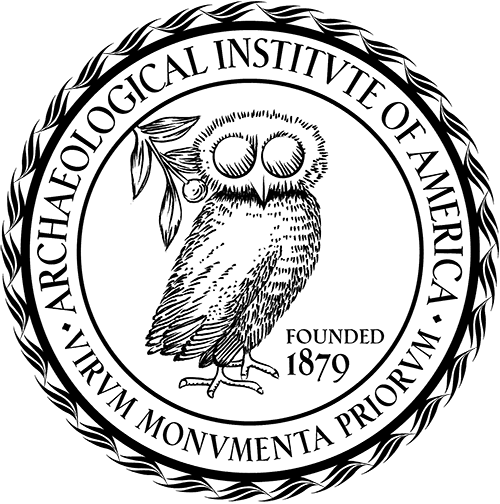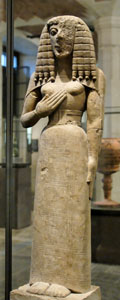December 7, 2009
by Sebastian Heath

A First-Person Account of the CPAC Meeting Reviewing Italian Import Restrictions
On October 21 the Federal Register, which the US government uses for official communications, gave notice of a public meeting of the Cultural Property Advisory Committee (CPAC) to be held on November 12 and 13, 2009. I serve as the Vice-President for Professional Responsibilities of the AIA so this bureaucratic announcement, which circulated as a PDF, meant I needed to make a trip to the nation’s capital as part of the AIA’s efforts to preserve archaeological resources for future study and appreciation. A little bit of history will explain why this was the case as well as set the stage for describing my reactions to the event.
In 1970 the United Nations Educational, Scientific and Cultural Organization adopted the Convention on the Means of Prohibiting and Preventing the Illicit Import, Export and Transfer of Ownership of Cultural Property. The convention defines “cultural property” as “property which, on religious or secular grounds, is specifically designated by each State as being of importance for archaeology, prehistory, history, literature, art or science”. It further includes “products of archaeological excavations (including regular and clandestine) or of archaeological discoveries” and “antiquities more than one hundred years old, such as inscriptions, coins and engraved seals”. Taken as a whole, the 1970 UNESCO Convention provides an important framework by which ratifying countries, or “states parties”, work together to combat the trade in illicit antiquities. Accordingly, it is of direct interest to archaeologists and to the AIA.
The United States became a party to the convention in 1983. At that time, Congress passed the Convention on Cultural Property Implementation Act, which controls how the United States will make good on its commitments under the convention. A main mechanism for implementing the act is a series of bilateral memoranda of understanding (MoU) between the US and other nations that restrict the import of antiquities into the United States. In 2001, the US and Italy signed such an MoU; this was extended in 2006, and the Oct. 21 announcement indicated it was the Italian MoU that would be considered on Nov. 13. Specifically, the Federal Register called for comments on Article II of the agreement. Among other steps, Italy offered to increase enforcement of existing laws, approve loans to American museums, allow American archaeologists to excavate in Italy, and engage in international collaboration to prevent further looting.
The AIA believes that the Italian MoU has been effective and that archaeologists, museums and government officials in Italy and the United States have successfully worked together under the terms of Article II to bring benefits to the public in both countries. In order to make these points at the Nov. 13 public meeting, I had to submit a written text, which is now available on the AIA website. In that letter I pointed to long-term loans – such as those to the Metropolitan Museum in New York and the Museum of Fine Arts in Boston – that illustrate the process by which objects are being repatriated to Italy while still allowing the American public to view magnificent works of ancient art. I noted examples of American archaeologists working in Italy as well as the fact that Southern Methodist University was able to bring objects from its excavation near Florence to Texas for display in the Meadows Art Museum. All of this activity shows that Article II is working.
The meeting itself took place on a rainy day at 2200 C Street NW, across the street from the main State Department building. I had arrived with Nathan Elkins, a numismatist and member of the AIA’s Cultural Heritage Policy committee, who would also be speaking. Mr. Elkins is particularly knowledgeable about the efforts of Italian law enforcement to recover looted artifacts, both in Italy and through collaboration with foreign police, so his input was very welcome. Other colleagues whom I knew would be present were Dr. Patty Gerstenblith of the Lawyers Committee for Cultural Heritage Preservation and Dr. Richard Leventhal, director of the University of Pennsylvania’s Cultural Heritage Center.
We all gathered in the lobby, our identifications were checked, and then we went upstairs into a crowded room that had a table in the center for the committee members and chairs around the edge for visitors. Katharine Lee Reid, the Chairwoman of CPAC, called the meeting to order and pointed out an empty chair at the head of the table. That was where speakers would sit for the five minutes we were each allotted.
There were 11 speakers, including me. When we had all finished, I was pleased to note that the speakers representing museums generally praised the cooperation of their Italian counterparts in efforts to arrange loans to American institutions. It is clear that museums in this country would like to display Italian objects for longer periods than is currently possible, which seems to be a reasonable request. Only one museum representative, from the Minneapolis Institute of Arts, seemed to question the premise that it is appropriate to use the MoU to restrict import of antiquities from Italy with the goal of protecting sites and preserving information on the context of ancient art. She noted that her museum recently exhibited the famous Dame d’Auxerre as part of a temporary exhibition and that the piece could stand on its own as a masterwork of human achievement. The implication seemed to be that ongoing acquisition of undocumented works, without good information on their archaeological contexts, is a responsible way forward for museums.

Photo: The Lady of Auxerre (© Marie-Lan Nguyen / Wikimedia Commons)
While appreciation of artistic accomplishment is a valid approach to ancient material culture, there are flaws in this argument that can be seen by more closely examining the case of the Dame d’Auxerre. This statue was purchased in 1895 by a theater manager from the northern French town that gives this female image its name. No sure information about its provenance was known, though the piece was quickly recognized as a masterwork of the seventh century B.C. style of Greek art known as Daedalic. But where is this statue from? The bottom line is that the specific findspot is lost and irrecoverable. Comparisons with Cretan sculpture have long been recognized, such as with the seated goddess discovered at Prinias, now in the Herakleion museum. More recently, excavations at the Cretan site of Eleutherna have produced fragments of similar sculptures and the Louvre, where the Dame d’Auxerre has its permanent home, has suggested that the statue was removed from that site in the late 19th century. If the figure is from Crete, then it stands in a long line of sculptural development on the island that is likewise spectacularly illustrated by the three bronze statues – possibly depicting Apollo, Leto and Artemis – excavated at Dreros and also on display in the Herakleion Museum. Further consideration of the Auxerre figure within the long-term history of representations of the human body calls to mind the Neolithic statues scientifically excavated at ‘Ain Ghazal in Jordan. It is through comparison with such examples of well-documented ancient sculpture that we can more fully understand both the artistic and cultural significance of an unprovenanced work such as the Dame d’Auxerre. If we do not continue to protect those archaeological resources that survive, then we will lose information that would otherwise increase our understanding of the ancient world. The MoU with Italy and those with other countries are an important part of stopping such losses.
One disturbing trend that did manifest itself at the meeting is the suggestion that archaeological material should be sold after study by archaeologists. Richard Leventhal was asked what he thought of this possibility and properly responded that it was not a viable option. The term “redundant artifacts” had come up earlier in the meeting so it is important to state clearly that archaeologists do not embrace this concept. The association between a single artifact, its findspot and the broader assemblage with which it was found make each piece unique. While archaeologists do publish final reports, the continuing development of new methods and scholarly approaches means that no object is ever fully known. Dispersal into private collections would make future access and examination difficult, if not impossible. It is certainly the case that archaeological materials can be loaned to institutions around the world, thereby increasing understanding of ancient cultures. An excellent example of such international collaboration is the ‘Ain Ghazal statues noted above. Some of these have traveled to the British Museum and the Smithsonian Institute for conservation and display.
Another voice heard at the CPAC meeting was that of ancient coin collectors and dealers. Like many AIA members, one of the areas in which I’ve published scholarly articles is ancient numismatics so the protection of coins is of great interest to me. Archaeologists are members of the numismatic community, and it is important that our voice is heard. Speaking for coin dealers, Peter Tompa, who represented both the International Association of Professional Numismatists and the Professional Numismatists Guild and who has also released a summary of his written submission, suggested that Italian museums are not good stewards of their numismatic collections and that Italian archaeologists do a poor job publishing excavated coins. My experience suggests that neither is the case. The Palazzo Massimo in Rome has a superb numismatic display that features excavated material, including hoard finds, to trace the rise and use of coinage from the Republican period onwards. The website www.fastionline.org reports the discovery of coins and often places them in context by discussing the sites on which they were found. Unfortunately, the current MoU does not include coins as a protected category. If Italy does request that coins be included in a future agreement, it is likely that the AIA would support such a move.
Overall, the trip to Washington was a fascinating experience. The mood in the meeting was adversarial but not unpleasant. Many of the organizations represented have adopted 1970, the date of the UNESCO Convention, as the limit for the acquisition of unprovenanced objects. This means that the demand for objects that have appeared on the market after 1970, and which don’t have documentation of legal export, should lessen over time. This is a beneficial change from the situation in place only a decade ago. The AIA welcomes the efforts of museums to avoid acquiring illegally exported art and antiquities and looks forward to the continuation of successful mechanisms such as the Italian Memorandum of Understanding.